5 surprising facts about Hanukkah in Germany
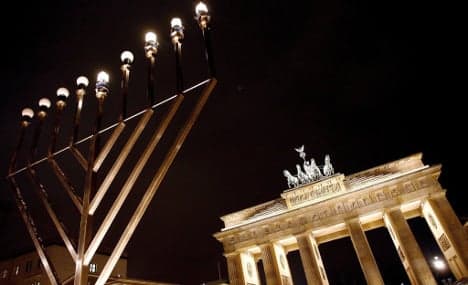
To celebrate Hanukkah, The Local into a few things you perhaps didn't know about Hanukkah in Germany.
The annual eight-day festival of Hanukkah is a crucial event in the Jewish calendar.
Commemorating the victory of the Maccabean Revolt against the Seleucids around 2,200 years ago, it's often known as the Festival of Lights.
1. Germany has one of the largest Jewish populations in western Europe
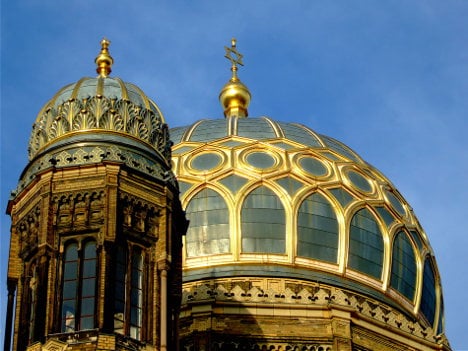 The New Synagogue was built in Berlin in 1859-66. Photo: Michael Walles / Flickr Creative Commons
The New Synagogue was built in Berlin in 1859-66. Photo: Michael Walles / Flickr Creative Commons
It's estimated that around 200,000 Jewish people live in Germany today, the Central Council of Jews in Germany told The Local.
This gives Germany the third largest Jewish population in western Europe, behind Britain and France.
Of course, Germany's Jewish population has had a turbulent century.
In January 1933, around 522,000 Jews lived here. But as persecution under the Nazi party increased, over 300,000 emigrated.
By the eve of the Second World War, just 214,000 Jewish citizens remained in Germany - and by 1945, around 180,000 German Jews had been murdered by the Nazi regime.
Since then, Germany's Jewish population has regrown - and today, Jewish communities associated with the Central Council have around 100,500 members, a spokesperson told The Local.
This figure has actually decreased slightly in recent years, falling from 104,000 in 2010.
A total of 108 Jewish communities, 100 synagogues and 71 rabbis are currently associated with the Central Council of Jews in Germany.
2. The menorah at the Brandenburg Gate is the largest in Europe
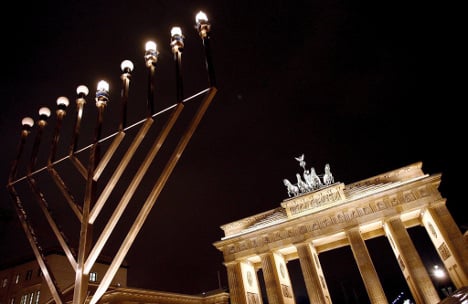 Photo: DPA
Photo: DPA
Each year since 2004, a nine-branched Hanukkah menorah has been lit up in Berlin's Pariser Platz on the first night of the holiday.
The menorah is a crucial part of the Hanukkah celebration, and commemorates the rededication of the Holy Temple in 165 BC.
The temple's menorah had to burn throughout the night, every night - but at the time, the Maccabees could only find enough purified oil to sustain it for a day.
By a miracle, the oil kept the menorah's lamps burning for eight whole days, allowing the Jews to produce a fresh supply of kosher oil.
3. The dreidel comes from a German gambling game
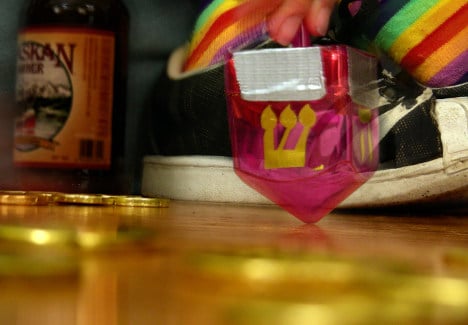
Photo: hobvias sudoneighm / Flickr Creative Commons
A popular Hanukkah pastime, the dreidel actually has its origins in the Medieval European "Teetotum".
The Teetotum was a four-sided gambling spinner. In Germany, it was called a torrel or trundle and decorated with letters N (Nichts / nothing); G (Ganz / all); H ( Halb / half) and S ( Stell ein / put in).
The name dreidel derives from the Middle High German verb drehen, which means "to turn".
4. Germany was doing "Chrismukkah" way before Seth Cohen
The term "Chrismukkah" may have found its way into American usage after that 2003 episode of The O.C...
...but the term "Weihnukka" - a mix of Weihnachten and Chanukka, the German terms for Christmas and Hanukkah - has been a part of German-Jewish tradition since the 19th Century.
In Berlin's Jewish Museum, a Christmas tree forms part of a permanent exhibition on family life.
But despite Christmas trees being found in many Jewish homes in the late 19th and early 20th centuries, most German Jews celebrated Christmas as a national cultural event only - meaning the trees had no religious significance.
5. Hanukkah doughnuts are getting a Berlin twist...
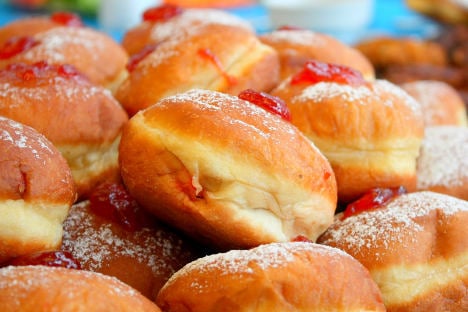 Photo: Avital Pinnick / Flickr Creative Commons
Photo: Avital Pinnick / Flickr Creative Commons
A sufganiyot is a sweet fried dough snack typically served at Hanukkah.
This traditional delicacy was originally made by cutting two circles of dough, molding them around a jam filling and then frying in one piece.
But nowadays, it's much easier - and therefore more common - for the dough balls to first be fried, then injected with a filling.
This makes the sufganiyot almost identical to the German Berliner.
By Hannah Butler
This article was first published in 2015.
Comments
See Also
The annual eight-day festival of Hanukkah is a crucial event in the Jewish calendar.
Commemorating the victory of the Maccabean Revolt against the Seleucids around 2,200 years ago, it's often known as the Festival of Lights.
1. Germany has one of the largest Jewish populations in western Europe
 The New Synagogue was built in Berlin in 1859-66. Photo: Michael Walles / Flickr Creative Commons
The New Synagogue was built in Berlin in 1859-66. Photo: Michael Walles / Flickr Creative Commons
It's estimated that around 200,000 Jewish people live in Germany today, the Central Council of Jews in Germany told The Local.
This gives Germany the third largest Jewish population in western Europe, behind Britain and France.
Of course, Germany's Jewish population has had a turbulent century.
In January 1933, around 522,000 Jews lived here. But as persecution under the Nazi party increased, over 300,000 emigrated.
By the eve of the Second World War, just 214,000 Jewish citizens remained in Germany - and by 1945, around 180,000 German Jews had been murdered by the Nazi regime.
Since then, Germany's Jewish population has regrown - and today, Jewish communities associated with the Central Council have around 100,500 members, a spokesperson told The Local.
This figure has actually decreased slightly in recent years, falling from 104,000 in 2010.
A total of 108 Jewish communities, 100 synagogues and 71 rabbis are currently associated with the Central Council of Jews in Germany.
2. The menorah at the Brandenburg Gate is the largest in Europe
 Photo: DPA
Photo: DPA
Each year since 2004, a nine-branched Hanukkah menorah has been lit up in Berlin's Pariser Platz on the first night of the holiday.
The menorah is a crucial part of the Hanukkah celebration, and commemorates the rededication of the Holy Temple in 165 BC.
The temple's menorah had to burn throughout the night, every night - but at the time, the Maccabees could only find enough purified oil to sustain it for a day.
By a miracle, the oil kept the menorah's lamps burning for eight whole days, allowing the Jews to produce a fresh supply of kosher oil.
3. The dreidel comes from a German gambling game

Photo: hobvias sudoneighm / Flickr Creative Commons
A popular Hanukkah pastime, the dreidel actually has its origins in the Medieval European "Teetotum".
The Teetotum was a four-sided gambling spinner. In Germany, it was called a torrel or trundle and decorated with letters N (Nichts / nothing); G (Ganz / all); H ( Halb / half) and S ( Stell ein / put in).
The name dreidel derives from the Middle High German verb drehen, which means "to turn".
4. Germany was doing "Chrismukkah" way before Seth Cohen
The term "Chrismukkah" may have found its way into American usage after that 2003 episode of The O.C...
5. Hanukkah doughnuts are getting a Berlin twist...
 Photo: Avital Pinnick / Flickr Creative Commons
Photo: Avital Pinnick / Flickr Creative Commons
A sufganiyot is a sweet fried dough snack typically served at Hanukkah.
This traditional delicacy was originally made by cutting two circles of dough, molding them around a jam filling and then frying in one piece.
But nowadays, it's much easier - and therefore more common - for the dough balls to first be fried, then injected with a filling.
This makes the sufganiyot almost identical to the German Berliner.
By Hannah Butler
This article was first published in 2015.
Join the conversation in our comments section below. Share your own views and experience and if you have a question or suggestion for our journalists then email us at [email protected].
Please keep comments civil, constructive and on topic – and make sure to read our terms of use before getting involved.
Please log in here to leave a comment.